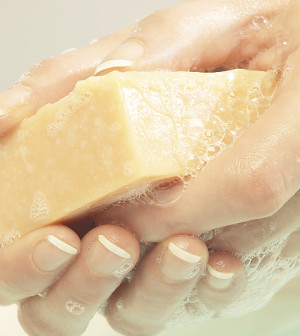- Understanding the Connection Between Anxiety and Depression
- How Daily Prunes Can Influence Cholesterol and Inflammation
- When to Take B12 for Better Absorption and Energy
- Epsom Salts: Health Benefits and Uses
- See What Saffron Can Do for Sleep and Heart Health
- 6 Common Mistakes to Avoid Before Your Physical
- Can Sweating Really Help You Beat a Cold?
- Strengthening Your Relationship: Practical Strategies
- Skip Storing This Everyday Product in the Fridge Door
- Green Tea + B3 Pairing May Boost Brain Health
4 Ways to Protect Yourself Against Poison Ivy, Oak and Sumac

When you’re enjoying the great outdoors, be on the lookout for poison ivy, poison oak and poison sumac.
The urushiol oil in their sap can cause itching, a red rash and blisters. These symptoms can appear from a few hours to several days after exposure, according to the U.S. Food and Drug Administration.
Learn what these plants look like so you can avoid them. The old saying “Leaves of three, let it be” is a helpful reminder for poison ivy and poison oak. But it’s not foolproof — the form may vary depending on the type of plant you encounter. Poison sumac, meanwhile, usually has clusters of 7 to 13 leaves, according to the U.S. National Institute for Occupational Safety and Health.
If you’re working in areas with these plants, wear long sleeves, long pants tucked into boots and impermeable gloves. Wash garden tools and gloves regularly.
Wash pets if they may have brushed up against these plants. Use pet shampoo and wear rubber gloves. Though most pets aren’t sensitive to these plants, the oil can stick to their fur and cause a reaction if you pet them.
If your skin does come in contact with poison ivy, oak or sumac, wash with cool water and soap as soon as possible. The sooner you do, the better the chance that you’ll remove the plant oil, the FDA says.
If you do develop symptoms, don’t scratch. Bacteria under your fingernails can get into blisters and cause an infection. To relieve itching, use wet compresses or soak affected areas in cool water. You can apply over-the-counter (OTC) corticosteroid creams or ointments or take prescription medications by mouth.
Topical OTC skin protectants, such as zinc acetate, zinc carbonate, zinc oxide and calamine can dry oozing and weeping in affected areas. Protectants such as baking soda or colloidal oatmeal ease minor irritation and itching. Aluminum acetate is an astringent that relieves rash.
See a doctor if you have a temperature over 100 degrees Fahrenheit; the rash has pus, soft yellow scabs or is tender; it spreads to your eyes, mouth or genital area, or covers more than one-fourth of your skin; the itching worsens or keeps you awake at night. Also, the FDA recommends seeing a doctor if the rash does not improve within a few weeks or breathing is difficult.
More information
The U.S. Centers for Disease Control and Prevention has more on poisonous plants.
Source: HealthDay
Copyright © 2026 HealthDay. All rights reserved.










